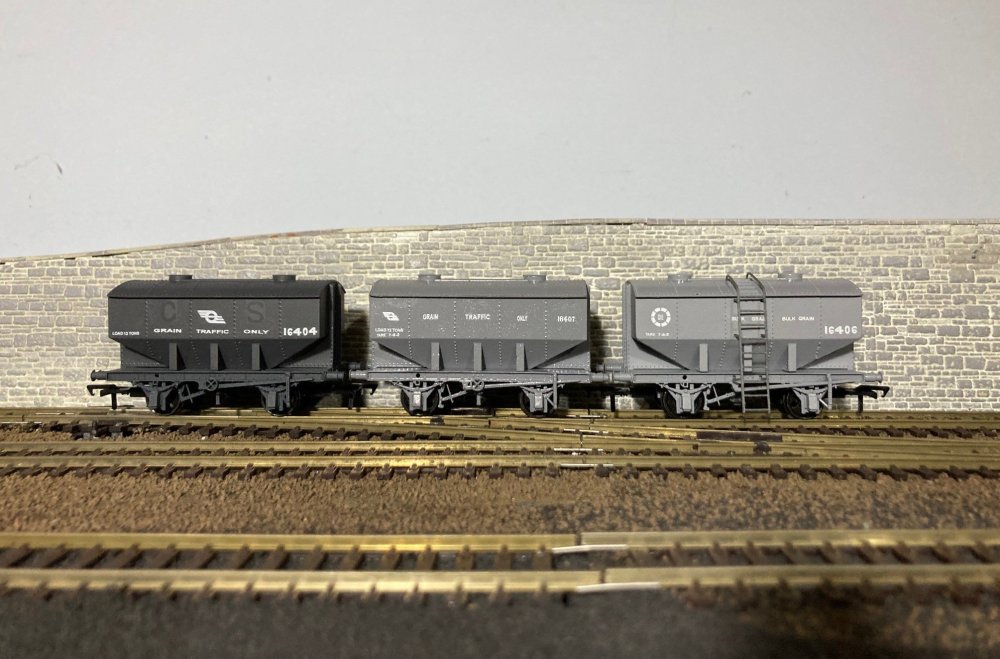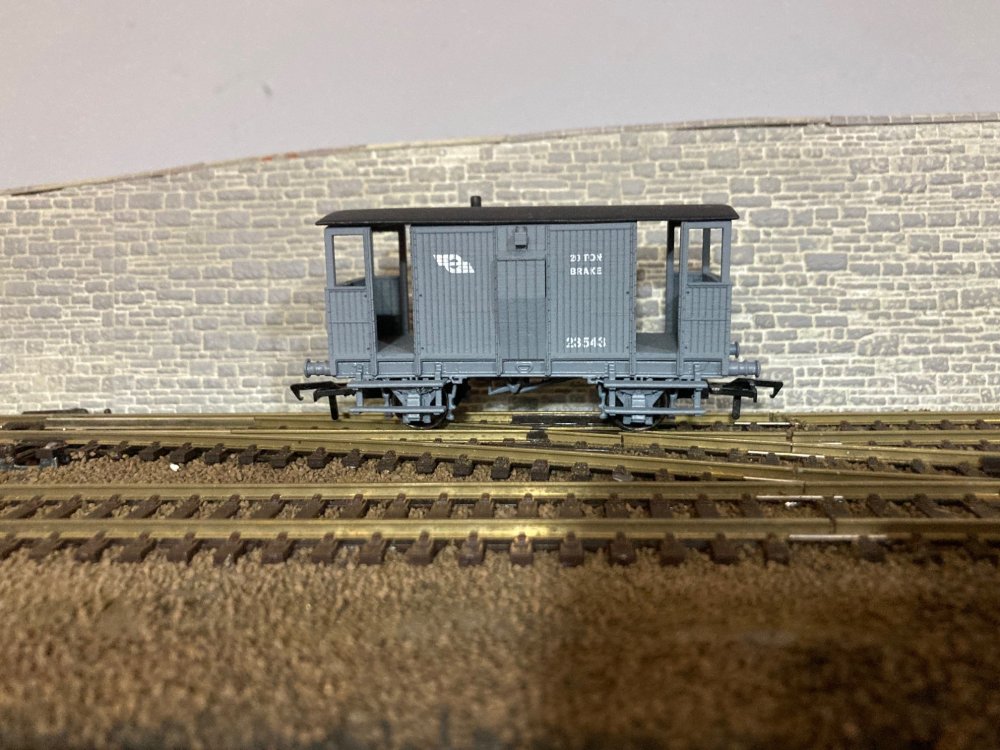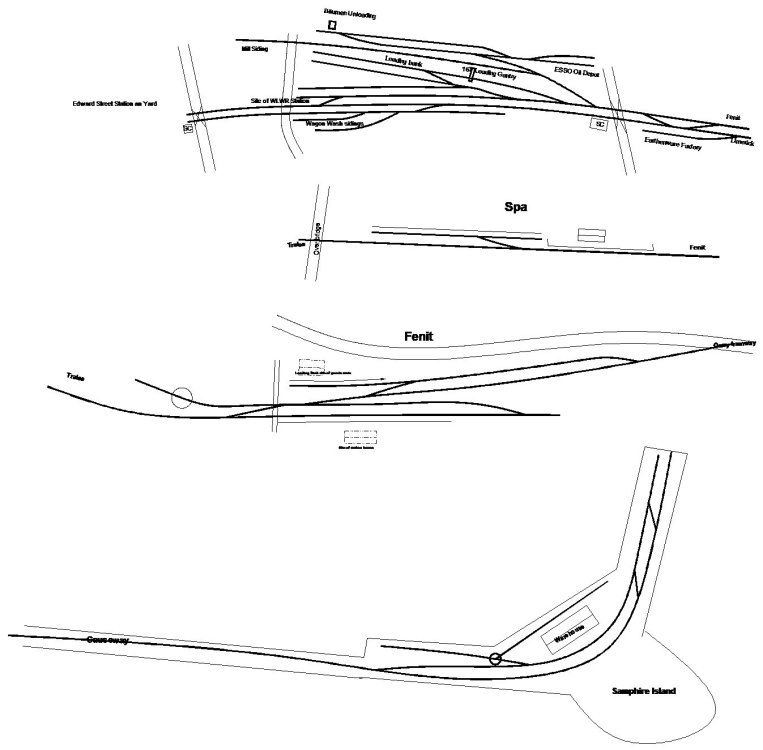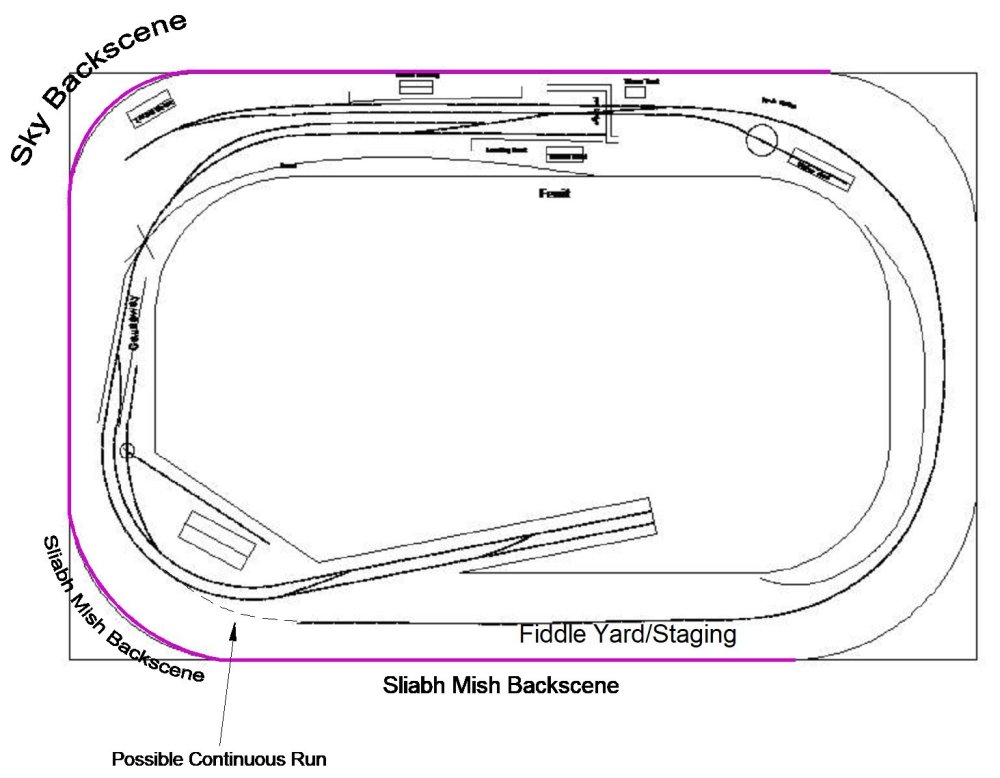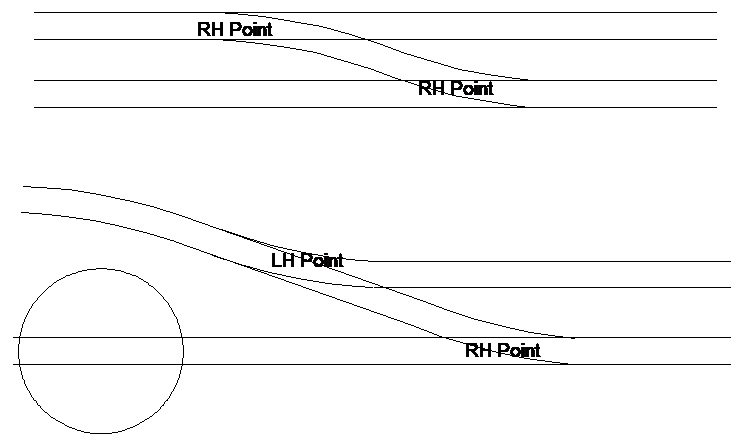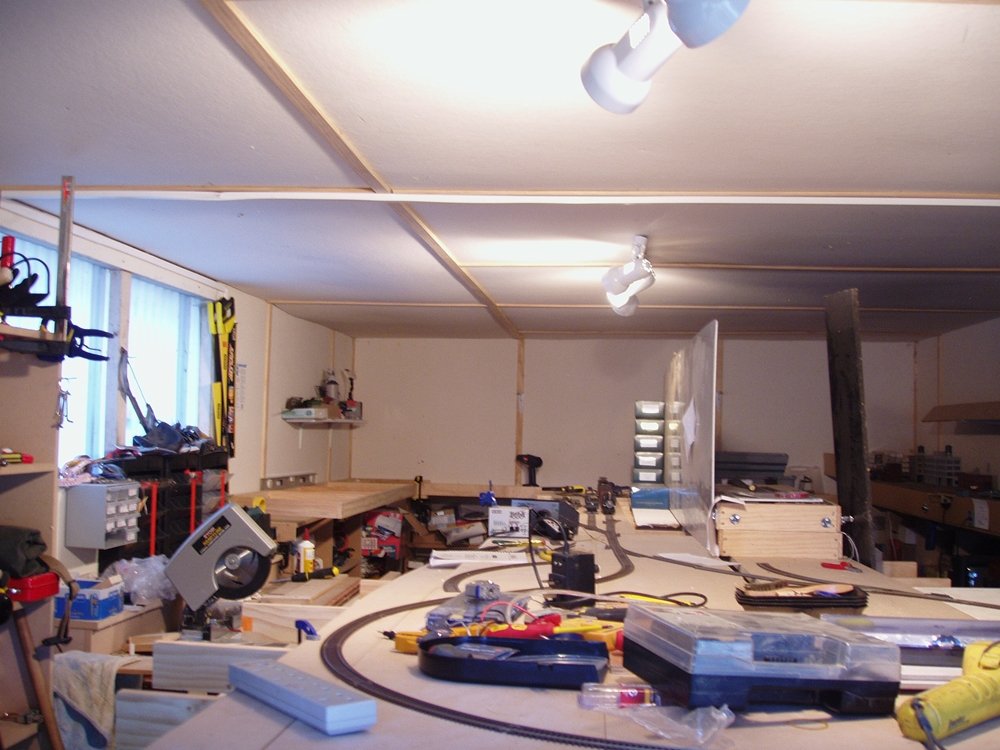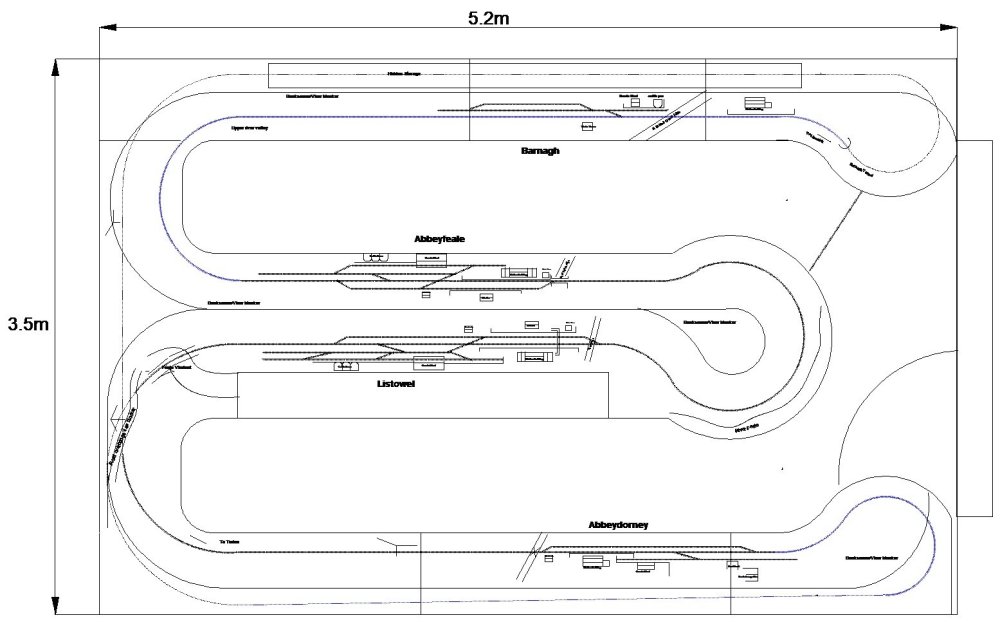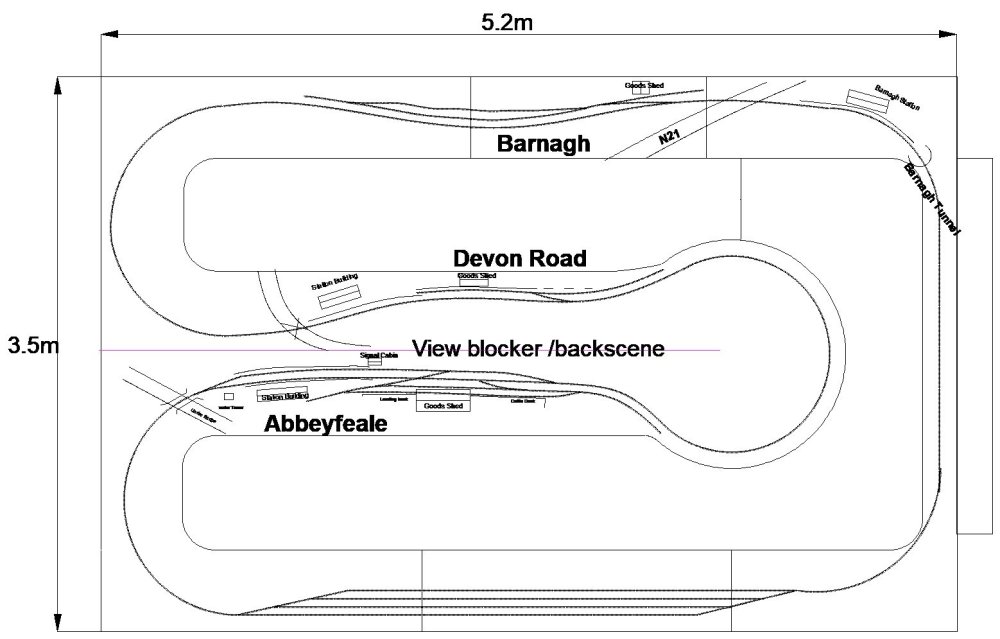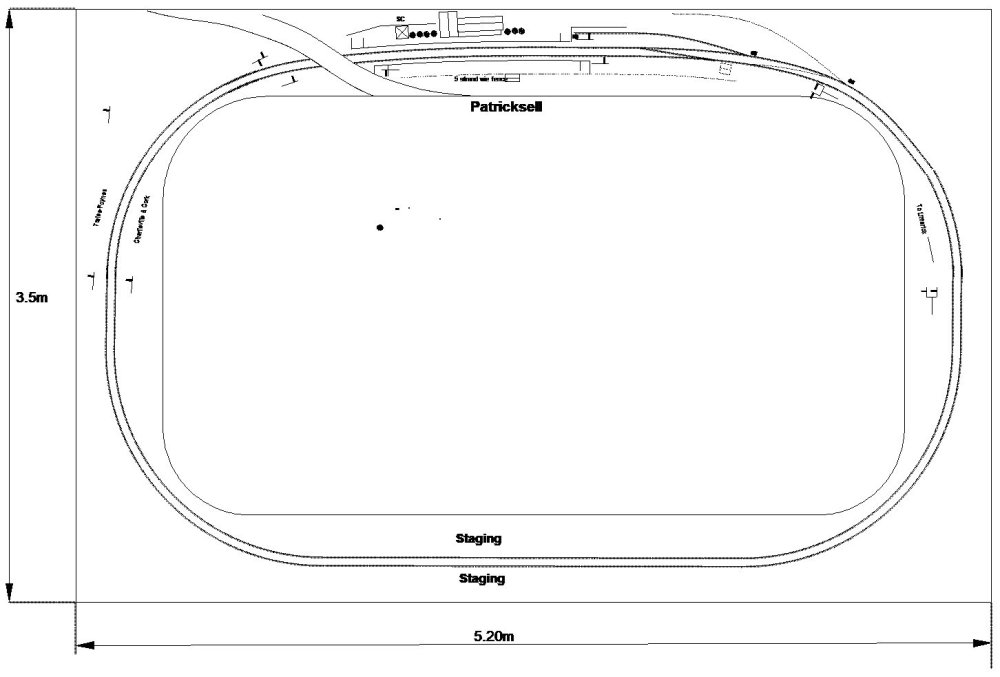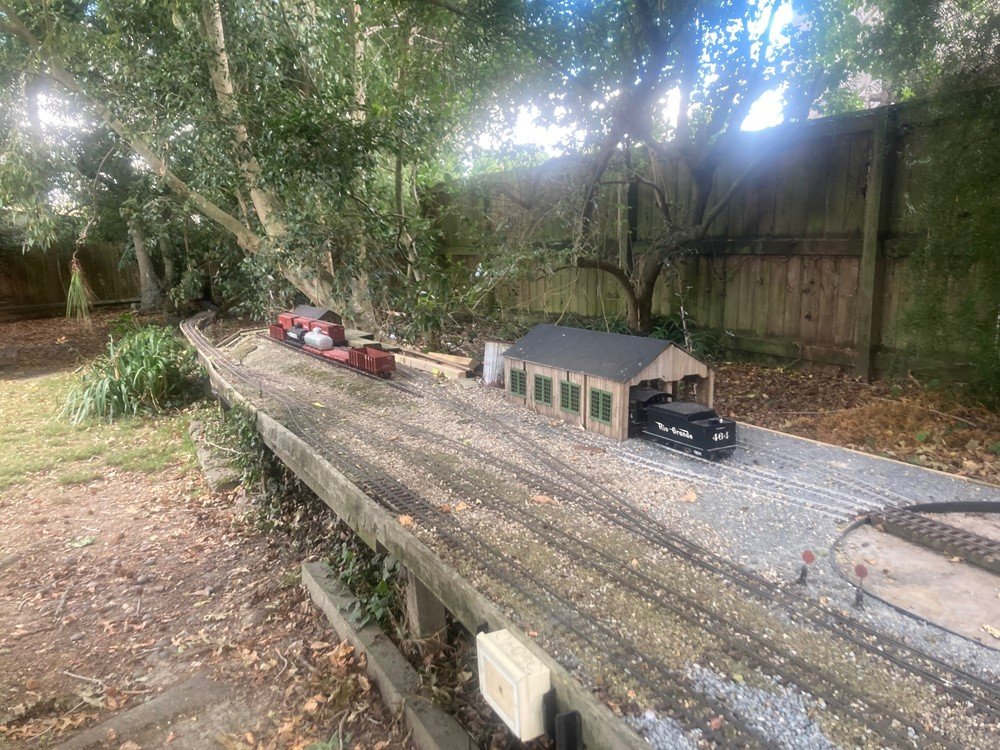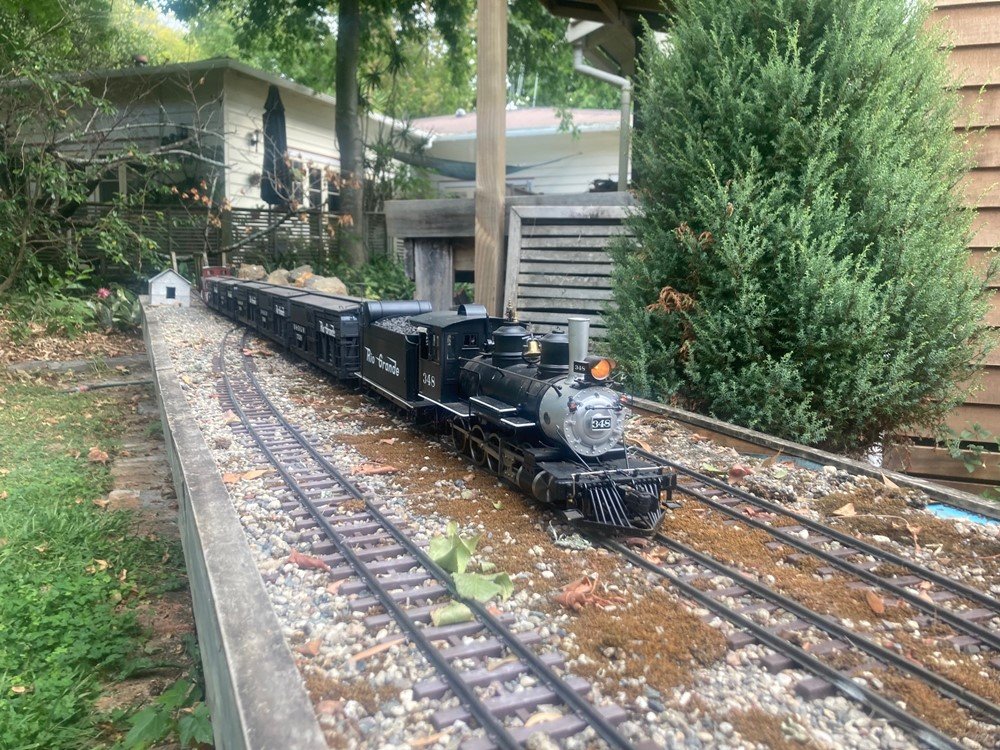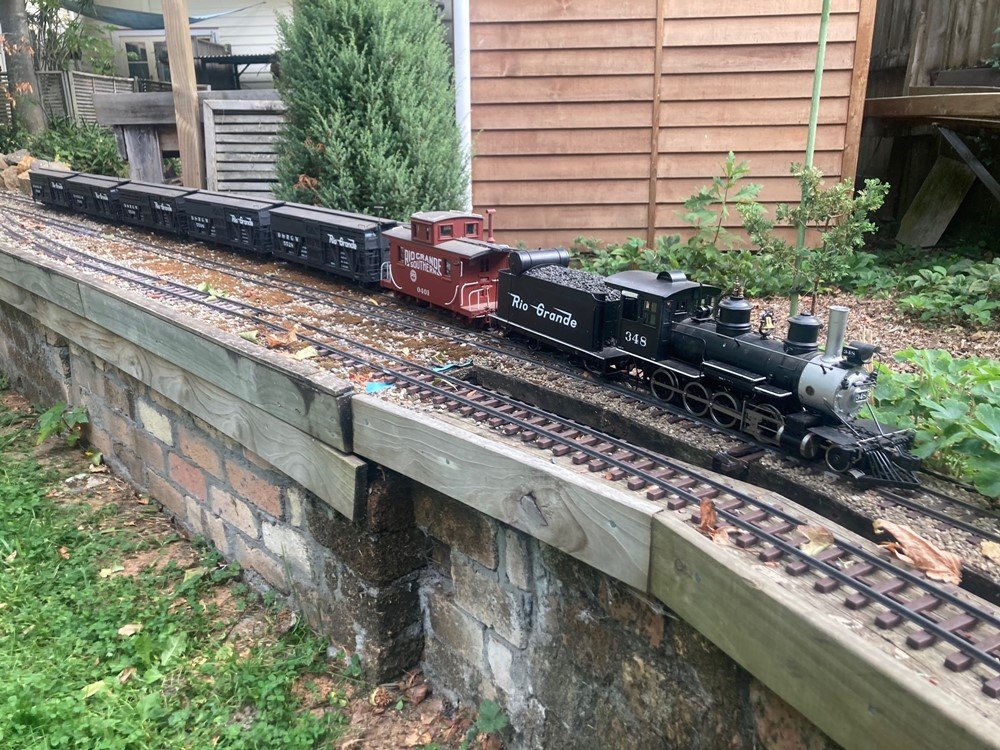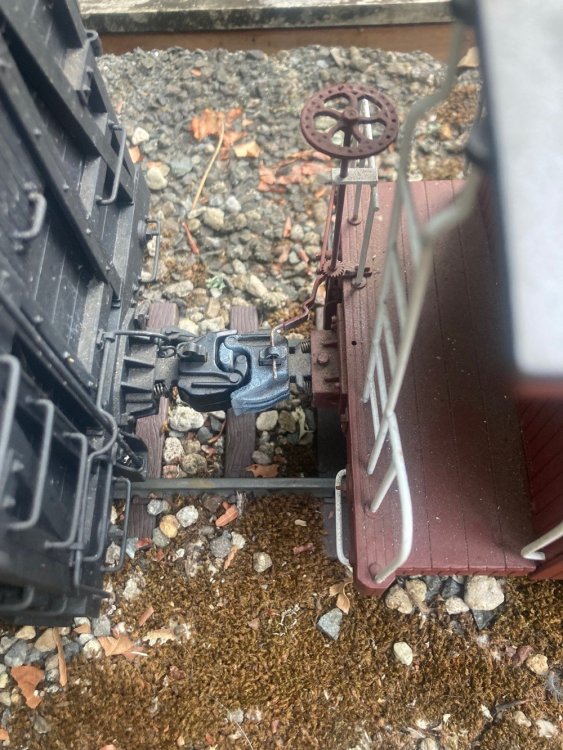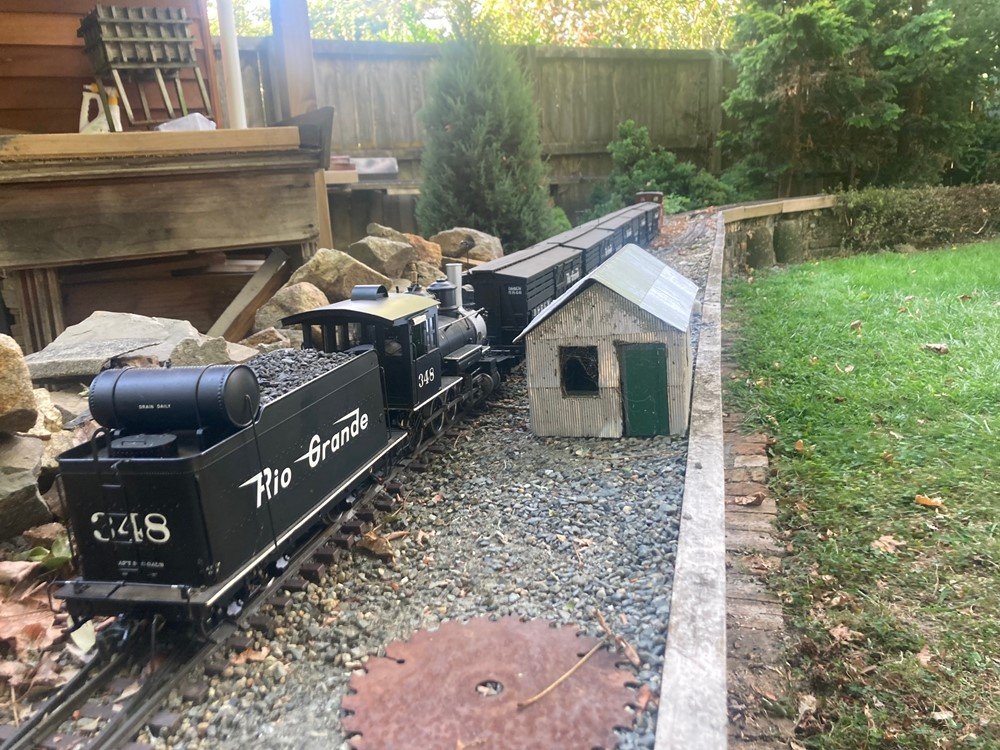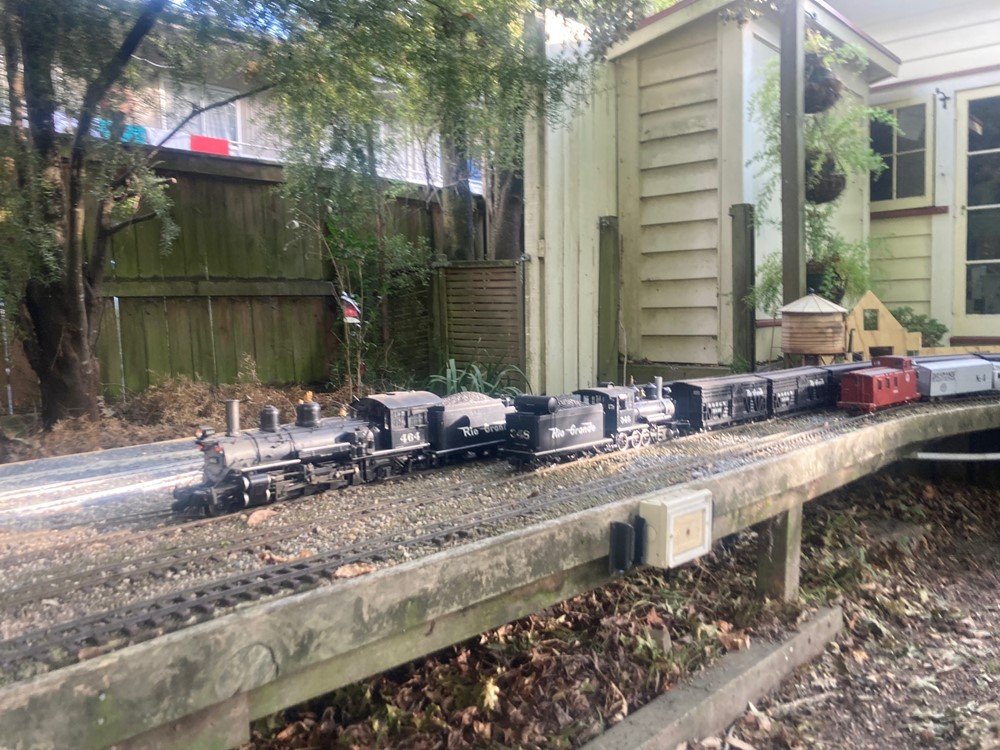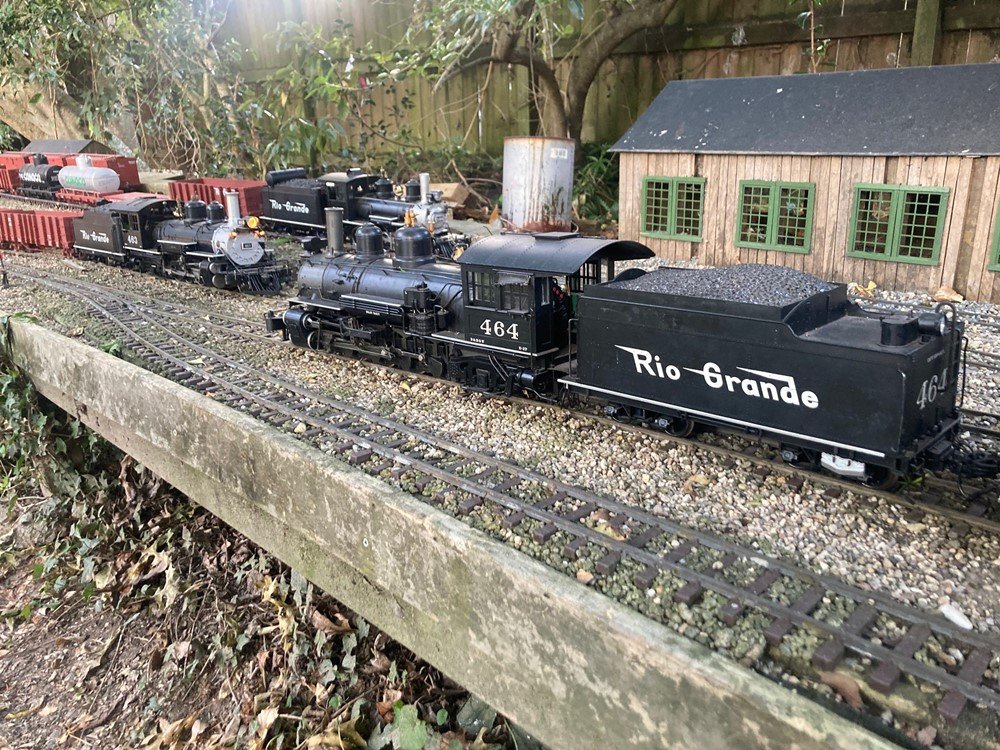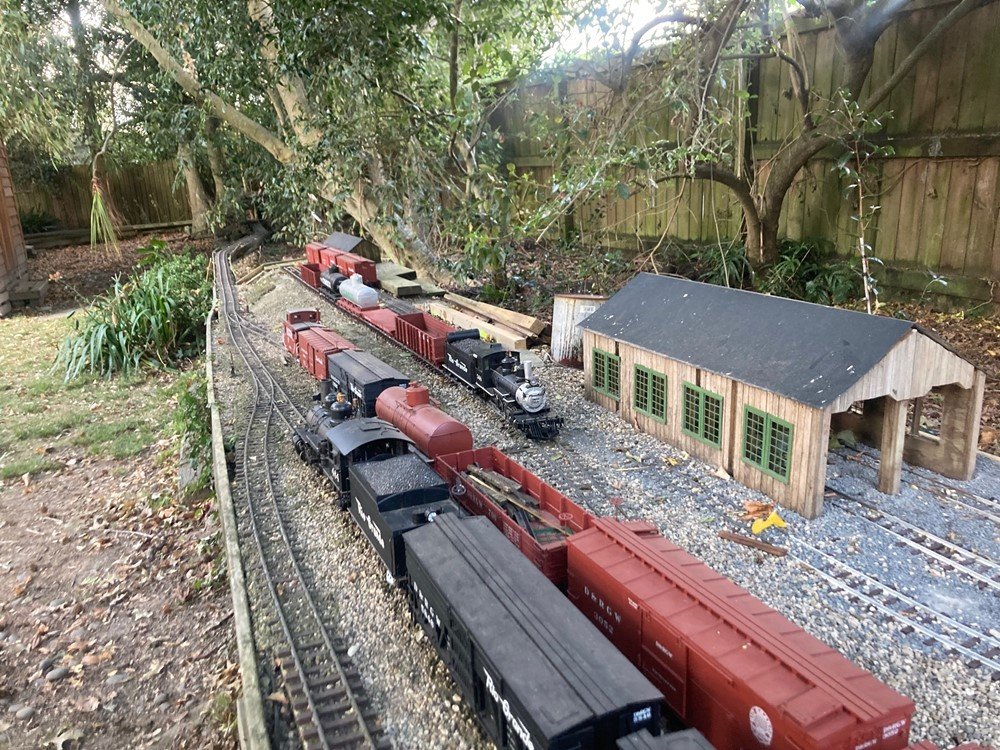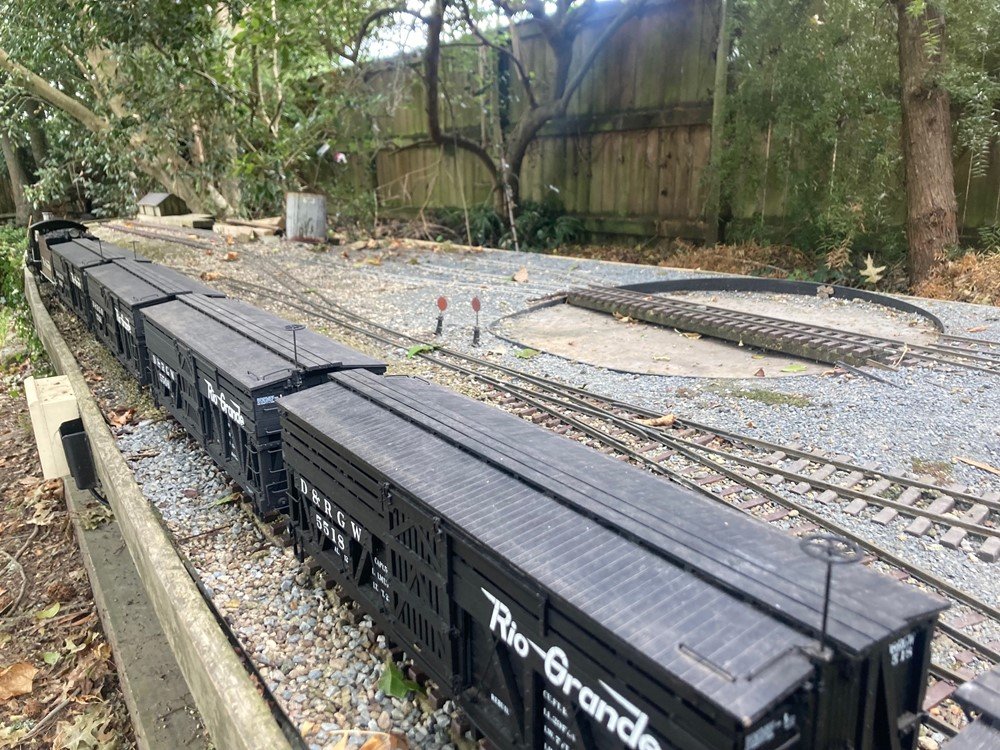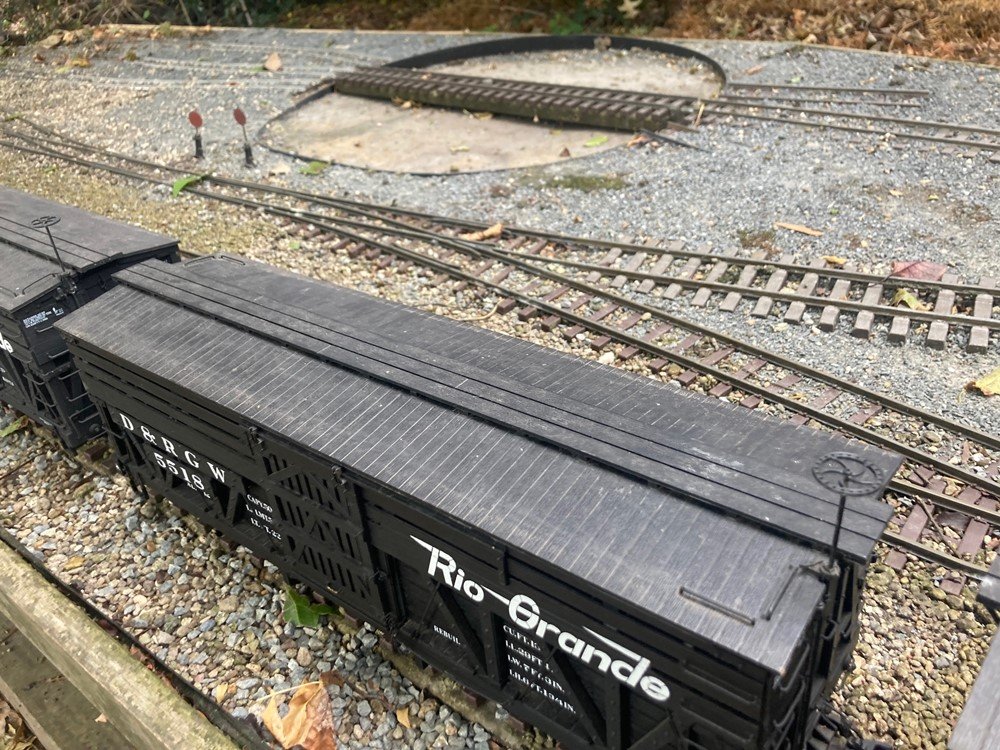-
Posts
4,873 -
Joined
-
Last visited
-
Days Won
119
Content Type
Profiles
Forums
Events
Gallery
Everything posted by Mayner
-
The Royal Mail like most postal authorities sell bags, boxes and envelopes https://shop.royalmail.com/postage-and-packaging?p=2. Locally it usually works out cheaper to send a small item by International Air Parcel in a post office pre-paid bag than supplying your own packaging. I seldom order a single small item by mail as the post office charge the International Air Parcel rather than the Airmail rate if the envelope or jiffy bag is greater than ½' thick. Apart from specialist suppliers like Markits or Alan Gibson Works, I usually order from UK suppliers such as Hattons, Gaugemaster, Rails or Kernow who usually carry a large range of models, accessories and tools in stock. Personally Brexit is not an issue the majority of my UK suppliers are vat registered and supply at 0% Vat , the Irish Government tightening up on import VAT is part of an international trend something that was bound to happen and largely dependent on developments in Customs scanning technology. The technology now appears to be working with most items clearing customs, the new Scanning technology is also resulting in lower customs clearance costs which are reflected in An Post and The Royal Mail 'processing fees".
-
Things appear to be returning to a degree of normality and I have largely cleared backorders since our suppliers re-opened after the Christmas/Summer Holidays and we are now in a position to accept orders. A (very) small number of "flying snail" Brake Vans including a light grey version from the original (Chinese) print order are currently available. https://jmdesignmodelrailways.com/ The Open, Covered are available in undecorated format complete with to be painted and finished by the customer. The undecorated wagons are supplied with wheels and couplings fitted to chassis, one piece body removable for painting and removable roof. The Open and Covered Wagon are supplied with decal sets which include 1. CIE Snail & Wheel Logos, 2. Tare information. 3. 10 Sets Running Numbers. A separate decal sheet is available with sufficient decals for 4 wagons (4-5 different schemes!) 1. 16404 Early GSR/CIE with GS lettering and running numbers. GS apparently painted out and grinning through paintwork. 2. 16407 & 16410 Mid-late 1950s with small snail and stencil running number 3. 16406 CIE wheel logo "Bulk Grain" and GSR? block lettering. 4. 16404 & 16406 GS I am planning to discontinue the Ranks Ireland version of the grain wagon once we fulfil current orders. Decals are not a viable option for the Ranks version due to the challenges in achieving a satisfactory finish over the raised rivet detail and there has been insufficient interest to date to justify tampo printing.
-
I seem to have spent a lot of time planning North Kerry Layouts for someone that's mainly interested in the Midland! I explored the North Kerry Yard, Ardfert, Abbeydorney, Spa and Fenit by bicycle while on holidays in Tralee shortly after the Fenit Branch and the Tralee-Abbeydorney section of the North Kerry closed to Beet Traffic, at the time Tralee North Kerry Yard was in use for Goods Traffic as the GSWR Yard was being upgraded to handle container and palletised freight under the Rail Plan 80 Scheme. The layout plan is based on fitting a 21mm gauge Fenit Station and Quay in the 17' x 12' garage, I originally drew up a plan for an L shaped shelf layout to fit a 7'6" X 5' space, but was unable to develop a workable plan for OO let alone 21mm gauge! In a way Fenit is ideal for a quickie layout as the main feature is the backscene a panorama of Tralee Bay with Sliabh Mish in the background, almost an Irish Kyle of Lochalsh with little in the way of foreground features or buildings, the Station Building Engine and Goods Shes appear to have been demolished many years ago, the Warehouse on the Quay being a simple structure. I have sketched in a possible continuous run connecting the pier and staging, alternatively the pier could be swung round to form a peninsula with access on both sides with the staging restricted to the area at the Tralee end of the station near the loco shed Operationally it could be quite interesting a small fleet of Self Propelled Steam Cranes were used for loading and unloading cargo until rail operations ceased on the quay in the mid-1970s, when traffic was heavy CIE used a G Class loco for shunting wagons over the Causeway between Fenit Station and Quay with Main Line Diesel Locomotives or an E Class working trains to and from Tralee, with Beet Specials operating between Tuam-Tralee-Fenit and Abbeydorney during the Autumn and Winter. The layout is mainly intended for modellers who are more interested in kit and scratchbuilding than collecting rtr-models though IRM & MM rtr locos and stock would speed up getting the railway up and running. In GSR/CIE steam days the GSWR 101 Class and ex-GSWR 6 wheel stock would have predominated, (regular passenger services ceased 1934), an ex-MGWR Small Tank redundant form the Waterford & Tramore was transferred to Tralee to work the branch in the late 1950s. Scratch building possibilities are endless with ex WLWR locos including Fenit Harbour Pier and Harbour Company"Shamrock" later GSWR/GSR/CIE 299. A 7mm model of Fenit Station or Pier would make good 'stand alone' models in 7mm, Alphagraphix produce etched kits of d 1934), an ex-MGWR Small Tank redundant form the Waterford & Tramore was transferred to Tralee to work the branch in the late 1950s. Scratch building possibilities are endless with ex WLWR locos including Fenit Harbour Pier and Harbour Company" Shamrock" 299, GSWR Ivatt 2-4-2Ts and ex-MGWR Small Tank locomotives.
-
One of my earliest railway memories is of a large blue steam locomotive with smoke defectors hauling a long passenger train crossing the Viaduct during one of our summertime trips (by car) to the seaside at Gormanstown as a small child during the 1960s. Imagine my surprise when I years later I discovered that there were large blue steam locos in Ireland and I might have actually seen 207 on the Tourist Train or a special!
-
The challenges of building a relatively compact layout in a small space. Set track has the great advantage that you can test different track layouts before committing yourself to the final layout and fixing everything down. I had similar problems with couplers and small radius points in the fiddle yard on my large scale garden railway when I changed from LGB (similar to an inverted tension lock) to Knuckle mounted couplers and eventually replaced the fiddle yard points. It might be worth replacing the narrow couplings with Hornby R8267 Medium Width tension locks if you are committed to Hornby or Peco Settrack points, changing to the medium couplers should reduce problems coupling up and de-railing . https://www.gaugemasterretail.com/magento/hornby-R8267.html Another potential problem is a bogie stock de-railing running through conventional crossovers, the reason CJ Freezer used left and right hand points to construct crossovers on the Minnories Suburban layout in 60 Plans for small railways. You seem to have avoided this on your layout and the diamond crossing arrangement has been used on full sized railways where space was tight
-
Walk around layouts tend to be more achievable in this part of the World the traditional suburban home was on a ¼acre section with room for a double garage, workshop or railway room, while despite intensification more modern homes tend to have an integral double garage. Our first home had a 24X14 garage I originally planned to build an On30 Colorado Narrow gauge layout with the Orphir Loop https://digital.denverlibrary.org/digital/collection/p15330coll21/id/14496as a center piece but quickly downsized to N because it I would have needed twice the space to make it work in O Scale, I never completed the N because of a house move but still have most of the track and stock as it may come in useful if we have to move home or downsize. The Peninsula featured open top L Girder baseboard with stringers and risers. Even getting as far as a mock up for the Geared Logging Locomotives We placed MDF as a temporary road bed to test the stock on the Loop The shortie On30 Bachmann stock tended to look unconvincing and dominate the scene, the loco was produced by Broadway Limited a plain but reasonably close to scale model apart from the gauge! a Sn3 or HOn3 (smaller in scale) layout would have worked well in the available in space but would have cost a fortune compared to Bachmann. A year later the N Gauge is running on temporary track on the peninsula. The layout is actually in operation at this stage with a mixture of permanent and temporary track. The main running line was developed into a Dumbell arrangement in a similar manner to the N Scale North Kerry concept with hidden trackage and staging behind the scenic break and elevators which linked up with the track on the peninsula to provide a continuous run, I managed to complete most of the hidden trackage before receiving a job offer that lead to a move to another town and from N to G and later 1:20.3 Scale American narrow gauge. Most of the baseboard material went into the garage/workshop in our new home and should be adequately seasoned after nearly 15 years!
-
I did some planning on a North Kerry themed layout several years ago, inspired by an New Irish Lines article on Barnagh and to see if it was feasible to fit in an American style "Walk Around' layout in our recently renovated garage. The line had the usual 3 passengers and a goods with a Limerick-Abbeyfeale passenger working up to the late 30s/early 40s with 1 passenger and goods in CIE days the passenger ceased in 1963 the Listowel-Ballingarne Junction closing completely in November 75, a Tralee- Listowel Goods and beet from Abbeydorney to Tuam via Tralee lingered on for a few years longer. Although closed to passenger traffic in 63 Passenger trains regularly operated over the line with Tralee Race Specials, GAA, Knock and School excursions and even as a diversionary route for the South Kerry until 1974. Part of the exercise was to see what could be achieved in N, OO and 21mm gauge with a similar layout theme in an identical space. My most successful layouts have been in N Gauge mainly because its feasible to build a layout with better operation potential than a OO or larger scale layout in a similar space. P North Kerry in N Barnagh-Abbeydorney The layout features a central peninsula with Abbeyfeale and Listowel stations on opposite sides of a central view blocker/backscene. Staging tracks are on the hidden section between Barnagh Tunnel and the Tralee end of Abbeydorney. The line climbed steeply from Newcastle West to the summit at Barnagh then descended gently towards Abbeyfeal and Listowel before undulating to Tralee The siding/loop at Barnagh may have been used for crossing or re-combining goods trains that exceeded the load limit on the grade from Newcastle West to Barnagh. I successfully used similar "Surround Staging" on American N gauge layouts in Ireland and in New Zealand before our move to our present home. The main focus of the layout is goods train operation with Two Crews working the up and down daily goods trains to the crossing point at Listowel or Abbeydorney before changing locos and returning home. Crews of cattle specials would work through to Limerick or Mallow or possibly through to Dublin or Waterford Ports. North Kerry in OO Barnagh to Abbeyfeale I just about fitted in the peninsula for the OO version with Barnagh and Devon Road as intermediate Halts. Siting Abbeyfeale beside the staging fits in with American practice of placing a main yard/station close to rather than equidistant from staging on a continuous run layout. Due to the grade West bound goods traffic tended to accumulate at Newcastle West until there was enough traffic to justify sending a loco from Limerick, though its possible that wagons were attached to the rear of the Limerick-Abbeyfeale passenger. In WLWR & GSWR days the "Mail Trains" carried van traffic attached at the rear, a possible reason for the unusual double loop arrangement in the goods yards at both Abbeyfeale and Listowel. Patrickswell North Kerry in 21mm gauge. I was largely restricted to a single station and staging yard because of the larger minimum radius and the longer points (more prototypical switch and crossing angles) required for 21mm gauge and chose Patrickswell because of its attractive setting simple track layout and appearance of double track with the North Kerry and Croom Lines parallel West of the station. The North Kerry and the Croom Branch split into two separate single lines at the crossover at the Limerick end of the platform, the lightly drawn crossover and siding were removed at some stage before closure. A section of the Croom line was retained as a siding for crossing trains after the 1967 closure of the branch until the cabin was closed in 1983. Apparently at one stage the Waterford and Limerick attempted to force the GSWR to double the line from Patrickswell to handle Cork Limerick Direct Railway Traffic, the GSWR routed its Dublin-Limerick goods traffic via Charleville Junction and Patrickswell before absorbing the WLWR. Needless to say nothing has become of these plans, though I am planning to replace the present roller shutter garage door with a wall and conventional doorway at some stage this year, my garage is largely a workshop than a model railway or layout room.
-
Interesting contrast between the C&L in GSR days with reasonably clean locos well maintained stock and infrastructure and run down CIE condition. It looks like Leyden's Coal Screens and loading plant may have been built on the foundations of the Arigna Iron Works dating from the early 1800s with later additions in concrete and corrugated sheet Some of the buildings were roofless by the mid-late 50s with the roof sheets but not framing removed from the large concrete building on the right and the 'lean to building beneath the ropeway.
-

Narrow Gauge in the Rockies not quite
Mayner replied to Mayner's topic in US / Canadian Railway Modelling
Its coming around to that time of year again days becoming shorter/cooler before leaf fall and winter more inclined to run trains than during the summer. Weather was good wasn't busy and I decided to run some trains Friday afternoon usual pattern a Way Freight or Pick up Goods to Jackson City the principal Town (railway depot/yard) on the line and a Stock Special to Arboles a small country Depot in the middle of no-where. 464 is on shed at Jackson City having worked in on the previous days freight. Almost drought conditions since before Christmas apart from the tail end of a tropical Cyclone in February which brought flooding and brought down trees, some damage to the Jackson County. The 'metal' fill in the Loco Yard has become nicely consolidated trying to avoid gluing, as glued ballast/paving tends to break up after 2-3 years. 348 arrived at Arboles with the Stock Special. Probably should change the name to Arbol as only one of the trees planted is thriving. The Caboose was uncoupled from the rear of the train before pushing the Stock Cars into the Siding for loading and re-coupling the caboose. Smaller stock yards tended to have 1-2 loading chutes and the loco would have to stay on the train and position the cars for loading which could be a slow process. The DRGW tended to use these small 2-8-0s for stock and freight trains on lightly laid branch lines until abandoned during the late 1940s -mid 1950. Close up of the Accucraft Kuckle couplers. Which are basically a scaled down version of the prototype, uncoupling is by raising a pin with a lifting bars on the freight car, caboose or loco. Departing Arboles tender first. 464 waits to take over from 346 at Jackson City. The stock train is too heavy for the small 2-8-0 on the 4% grade to the staging in the Garage 464 awaits to depart with the Stock Train as 463 arrives with a Way Freight (West) and 348 makes up 463s train (East) for departure. Nearly Tea Time! 463 has drawn her train into the clear to allow 464 to depart with the Stock Special. The next move was for 463 to either reverse or draw forward clear of the yard to allow 348 to position her cars on the Departure Road (at left of 464). Unfortunately rain was forecast, it was getting dark, and we had to abandon the session for another day! 463 pushed her train back to the staging, 464 returned picked up the cars that 348 had positioned and departed (in the dark) with 348 banking the train. Natural Weathering. I tend to allow dust to accumulate of freight car roofs as its very time consuming to remove. The Stock Train was caught in a sudden shower yesterday and I allowed to dry naturally with a reasonable effect. 348 was dried in the traditional manner with an oily rag! -
Suspended timber floor or concrete slab depending on era built. New Ross had a timber floor, possibly brick or concrete foundations/rising walls. Corrugated or weather board on timber framing. Interiors lined with tongued and grooved boarding or possibly wallpaper on hessian on rough cut boards. Timber frame with corrugated iron roofing and either timber weatherboard or corrugated iron cladding was and to a degree still is the standard for of construction in New Zealand, its an extremely resilient form of construction with many building from the 19th and early 20th Century still in use to this day, our house is just under 100 years old corrugated iron roof, original timber wall cladding, joinery and framing all hardwood with some modern upgrading. It might be worth contacting IE Chief Civil Engineers Office who may have drawings of some of the buildings signal cabins at stations on the Wexford Line were upgraded during the 1990s. Its possible Thompsons or Carlow Museum may have information on corrugated iron buildings supplied to railways, Thompson's have been in business since the early 1900, Keenan's of Bagnallstown was another major Co Carlow based structural steelwork/corrugated building supplier.
-
The West Cork and West Clare and other Tod Andrews closures appears to have been based on projections that CIE would loose less money, or possibly make a profit (in terms of operating and capital costs) if the passenger and goods traffic was transferred from rail to CIE road passenger and freight services. The 'improvements' tended to be more Bureaucracy and Incompetence with the left hand not knowing what the right hand was doing rather than cooking the books. The Policy Makers that decided on closure or a change in operating policy failing to inform Way and Works or Mechanical Engineering of a decision. Good examples were CIE ordering the G611 Class and the Western Region ordering the Class 14 "Teddy Bear" locomotives for Branch Line & Trip Working when they were largely redundant with Branch Line closures and changes in freight operation in both Ireland and the UK. In a lot of cases the work or project was already budgeted for a particular project and could not be used for a more relevant alternate project, very much a case spend it or loose it and keep staff employed until they could be re-deployed, retired or became eligible for redundancy. Sometimes it was cheaper to keep someone on the books (doing nothing) until they retired if they were unwilling to voluntary transfer to another role than offer and pay redundancy, during the 1980s my father (a fitter) was refused redundancy because of his long service while younger staff and some of his apprentices were offered and took redundancy. I ran into the same problem as a Head of Department on a UK Heritage railway although less than a mile long we had the same management structures and siloed mentality as British Rail. Some "improvements" such as the 'relaying' of parts of the Burma Road, Youghal Branch and other lines was actually the P.W. Department replacing good quality rail and track panels with worn material before closure for use on other lines, for many years CIEs track maintenance on secondary lines was based on patching using material cascaded from the mainlines and recovered from branches/closed lines. The Mechanical Engineers Departments tend to do the same using stocked locos and rolling stock as a source of spare parts before they are officially withdrawn and scrapped, hence long lines of stopped 001s at Inchacore, redundant 4w wagons at North Wall and long lines of stopped Class 31 Locos at Totton before they were actually withdrawn
-
I haven't any personal experience with Kato track, the photo looks spot on for American track and looks a lot more realistic than Peco Code 80 or 55 N gauge track. With the realistic track and standard and details of 3251 I almost want to resume where I left off my American N Scale modelling buy some Kato track and keep my stock of Peco for staging and hidden track I know of one large layout in Auckland which uses Kato track, the owner is the former owner of a model shop and importer of American and Japanese railway models prefers Kato to other system
-
Ken Fair play! especially producing kits for an unsung railway like the DWWR/DSER. I have used PPD for over 10 years and they consistently turned out high quality work and resolve problems when they occur. I have basically ceased design and manufacture of etched kits because of the lack of demand and I am focusing on models for my own personal use. Have you looked at a jewelry or precious metal supplier producing lost wax castings direct from a 3D model as opposed to resin casting? The lost wax castings for my 52 Class kit were produce from 3D printed masters as I did not realise that my supplier could produce the wax moulds by 3D printing https://morrisandwatson.com/3d-printing/ Unfortunately I haven't figured out how to form or 'loft' a 3D flare or skirt for a dome or chimney for the 52 Class I also use lost wax castings, when its necessary to produce duplicate or multiple patterns of producing whitemetal or pewter castings of components like springs or axleboxes. Lost wax casting worked out quite reasonable in cost, its possible that businesses in the Ireland and the UK are offering similar services to Morris and Watson.
-
I originally planned (2010)to produce the Tin Vans JMD using a cast resin body (from a 3D printed master) before going down the etched kit route. One of the main draw backs was high production costs due to the short mould life (<20 repeats per mould?) and labour intensive nature of the casting and clean up process. 12 years later I quickly found out that resin casting was not an option for producing the CIE 20T Goods Brake van. The local (New Zealand) companies that once carried out resin casting have either gone out of business or shifted to resin printing.
-
Leslie You made me reach for my copies of Locomotive & Rolling Stock of CIE and NIR. It looks like like you have sold more 54 Double Beets and 177 less 20' Skeletal Flats than CIE actually built. 300 Flats is not bad by any standards for a resin casting. I still have to get round to building my 'stash' of PW wagons, but haven't been able to find the time since I gave up my 'day job' several years ago.
-
Interesting seeing Collrolled Steel Framing being used in Ireland, though I 'built' the Four Storey 150 Bed Hotel with the stuff in Dublin during the mid 90s and its still standing. Looks like an excellent layout room high standard of dimensional stability with insulated wall and roof panels. Rolled steel framing which is becoming popular in this part of the world because of its light weight and dimensional stability compared to timber framing. The only odd thing to my mind was the traditional block rising walls and ground bearing floor slab, the majority of lightweight buildings in this part of the world are built on an insulated raft slab on a compacted sand pad.
-
The MGWR built few branch lines (Edenderry, Clara, Killeshandara) after it completed its trunk routes from Dublin to Galway and Sligo. The majority of MGWR Branch and secondary Main Lines were promoted and built by locally owned companies and worked by the Midland. The "worked" lines were built to MGWR standards in terms of civil engineering, buildings and structures, trackwork and signalling with stone station buildings, standard MGWR 2 road engine sheds and coal stages rather than the more economic construction favored by other companies. Interestingly Killeshandra had a small single road shed with integral water tower at the rear of the building, like a reversed version of Tetbury but with the water tower on one side of the roof. I think a Strandhill branch was more likely to be based by a loco based at Sligo, even the Midland would have been pushing it to demand a 2 road loco shed for a station only 5 miles from a major Loco Depot, but a shed for a single loco might have been justified in the days when locomotive crews were allocated to specific locos which more or less became part of the family Its likely a Sligo-Strandhill railway would have been financed and built by local interests in the 1870s and later taken over by the Midland in a similar manner to the Ballaghadereen Branch when the Strandhill company ran out of money/went bankrupt. There would have better chance of success for a Strandhill Railway from the 1880s onwards Baronial Guarantees on capital and potential Government Grants made it easier to raise capital to finance and build a railway. The presence of the SLNCR, WLWR/SLNCR in Sligo would have made negotiating a favorable operating agreement a lot easier, the MGWR was likely to be less insistent on imposing its standards with actual competition in the market. Modest cut stone buildings such as Ballaghadereen or Killeshandra would fit in for a branch line worked by the Midland before the arrival of the SLNCR or WLWR on the scene who would have been less fussed about station architecture and large loco depots. Westport Quay is a bit of an oddball in terms of MGWR terminal stations with a very humble plastered or possibly whitewashed station building and no goods shed. The Great Northern and Western (Athlone-Westport Quay and Ballina) station buildings became increasingly spartan as the line progressed Westwards, plain rectangular single storey cut stone buildings (originally without a platform canopy) at all stations from Castlerea to Westport Quay and Ballina in place of the ornate Gothic station buildings at Roscommon, Donamon and Ballymoe The WLWR developed its own distinct style for smaller stations on the Limerick Sligo line with 'Cottage Style" station building with stones quoins and plastered walls, stone goods sheds water towers and other structures. Tubbercurry appears to have had a single road loco shed in WLWR days but appears to have been demolished long before closure. On the other hand the GSWR and SLNCR would have no qualms with steep grades or corrugated iron buildings, so Cahirciveen could be literally lifted from Cahirciveen to County Sligo!
-
Possibly an ERG (Bournemouth) wagon. Clear Plastic (acetate?) body on die-cast chassis https://www.binnsroad.co.uk/railways/erg/index.html ERG was a component an kit supplier/manufacturer, introducing plastic Rex kits in the 50s/60s, the owner appears to have retired/gone out of business in the early 1970s, may have sold the stock to Beatties and other retailers. The model shop in Monk Place Phibsboro stocked the kits, I remember looking at an open wagon with a clear plastic body and a metal chassis but it was beyond my budget at the time.
-
A lot was tied up with money & politics in particular the Irish Question or "killing Home Rule with kindness". The Balfour Government spent a lot of money in the 1890s building Light Railways and other Public Works in poorer areas to keep the Liberals and Irish Parliamentary Party out of Government. The Glenties and Killybegs Branches appear to have been locally promoted lines largely financed by Government Grants with £1000 in Baronial Guaranteed capital. There appear to have been proposals to extend the Glenties branch line to Ardara into the 1920s it would have been difficult to raise the capital locally or justify further Government Grants particularly under a Liberal Government that had secured Irish Parliamentary Party support. The WLWR line North of Tuam and GSWR "Kerry Branches" are further examples of railways funded by Government Grants The Clifden and Burtonport Lines were definite Government schemes took as direct a route as possible through remote country to their destination and avoided coastal populated areas the actual "Congested Districts" the railways were intended to support. In more prosperous inland counties railways were mainly financed by local capital sometimes with a Baronial Guarantee the 19th Century equivalent of a modern private public partnership where the ratepayers sometimes guaranteed a 5% dividend on capital and were responsible for making up operational losses, which lead to a lot of ratepayer resentment towards companies like the Cavan & Leitrim where extensions to Rooskey and the Arigna mines were blocked by ratepayer opposition. Another factor was that the railways were territorial, the GNR(I) Carrickmacross Branch blocked the MGWR extending northbound from Kingscourt to Armagh and potentially Cookstown and over the BNCR to Portrush. The SLNCR existed as an independent railway (buffer state?) to allow the GNR to compete with the MGWR/GSR/CIE for traffic from Sligo and the West of Ireland without invading each others territory, one of the explanations for the gap in the rail system between Sligo & Bundoran. In a lot of places the railways were content for drovers and carters to deliver to a railhead rather than finance or build a branch line, the MGWR had a depot and carter in Loughrea for many years before the local gentry raised the capital to build the Loughrea and Attymon Light Railway.
-
There were several narrow gauge Roadside Tramway and Light Railway schemes linking the villages and towns across the plains of North Galway and Central Roscommon to the Broad Gauge at Dromad, Roscommon and Woodlawn stations. The Roscommon Central Light Railway (Dromad-Strokestown-Roscommon with a branch from Strokestown to Carrick on Shannon------The Longford and Strokestown Tramway-----The Roscommon and Mount Bellew Steam Tramway-----The Woodlawn, Mount Bellew and Mount Talbot Tramway. The Roscommon Central promoters appear to have been serious the Light Railway application to the Privy Council failing on a technicality despite having appointed a contractor, Grand Jury support for a Baronial Guarantee. Dromad-Roscommon-Mountbellew was incorporated in various Ulster and Connaght Light Railway schemes for a continuous 3' gauge railway from Newry to Galway city and Connemara.
-
I think the Class 66 EMD Model JT42CUR introduced 1998 have a later (more reliable) version of the EMD 710 engine and more significantly are heavier with 'self steering bogies' https://writebetter.io/examples/radial+self-steering+bogies/ . Self Steering Bogies were introduced during the mid late 1990s on American high horsepower freight locos such as the EMD SD70Mac and EG Dash 9-44CW to reduce wear and adhesion on curves a single SD70 or Dash 9-44 was expected to do the work of 1-2 earlier 6 axle locos such as SD40-2. The 201s are EMD Model JT42 HCW JT---Twin cab 42---EMD loco type H--head end power C- 6 axle version W Standard to 5'6" gauge The CUR suffix on the Class 66 JT42CUR likely to be C-6 axle version U meter to 5'6" gauge bogies R---Radial bogie?
-
Its an interesting topic, while many of Rice's schemes were fictitious or freelance in concept, the majority of the responses have looked to the prototype for examples. A lot depends of what you want out of a layout and the available space, its sometimes its easier to fit a OO gauge double tracked main layout into a smaller space than a finescale single tracked terminus. One concept could be a compact Cyril Freezer style double tracked layout with two stations (one a through terminus of Junction) and short 3-4 coach trains based on Irish Main Line practice, each line with its distinct architectural style and character Pre-DART Dublin suburban with a simplified model of Dunlaoire, Seapoint or Blackrock or pre-CTC Cork Line with its distinct sky signals and double pole runs Hazlehatch, or Sallins as center of interest and Straffan, the Midland with the Royal Canal on the climb from North Wall to Clonsilla, Cork-Cobh with its riverside running, wet cuttings bridges and small halts had more in common with a rustic branch line than a busy suburban. The might of been are almost countless from the early Railway Mania schemes to build Trunk Lines from Dublin to Valencia, Dublin to Enniskillen, rival Dublin-Belfast schemes, to the last days of Empire with the "All Red Route" from the United Kingdom to Canada and perhaps overland to the East via Belmullet to the more humble such as the Mullingar and Ballymahon Tramway, plans to revive and extend the Parsonstown and Portumna to Loughrea and an extension of the Dublin and Blessington to Holywood and across the Wicklow Gap to Glendalough and Rathdrum.
-

GNR built coaches that passed to the UTA?
Mayner replied to Lambeg man's question in Questions & Answers
Masonite is a US trade name for Tempered Hardboard, which would have fitted in with wartime & GNR(I) economy measures. Michael Baker described the relatively poor condition of the bodywork on recently withdrawn ex-GNR coaches in an early 1970s magazine article or book on CIE. The GNR(I) appears to have used softwood framing in combination with hardboard paneling during and possibly following the War which would have lead to the relatively short life of modern GNR coaching stock. Its possible the GSR re-paneled a pair of C&L Narrow Gauge coaches with a similar material in the late 1930s, the re-paneled bodies were not fit for the Leitrim weather the material was described as compressed cardboard. https://en.wikipedia.org/wiki/Masonite.
.png.c363cdf5c3fb7955cd92a55eb6dbbae0.png)


